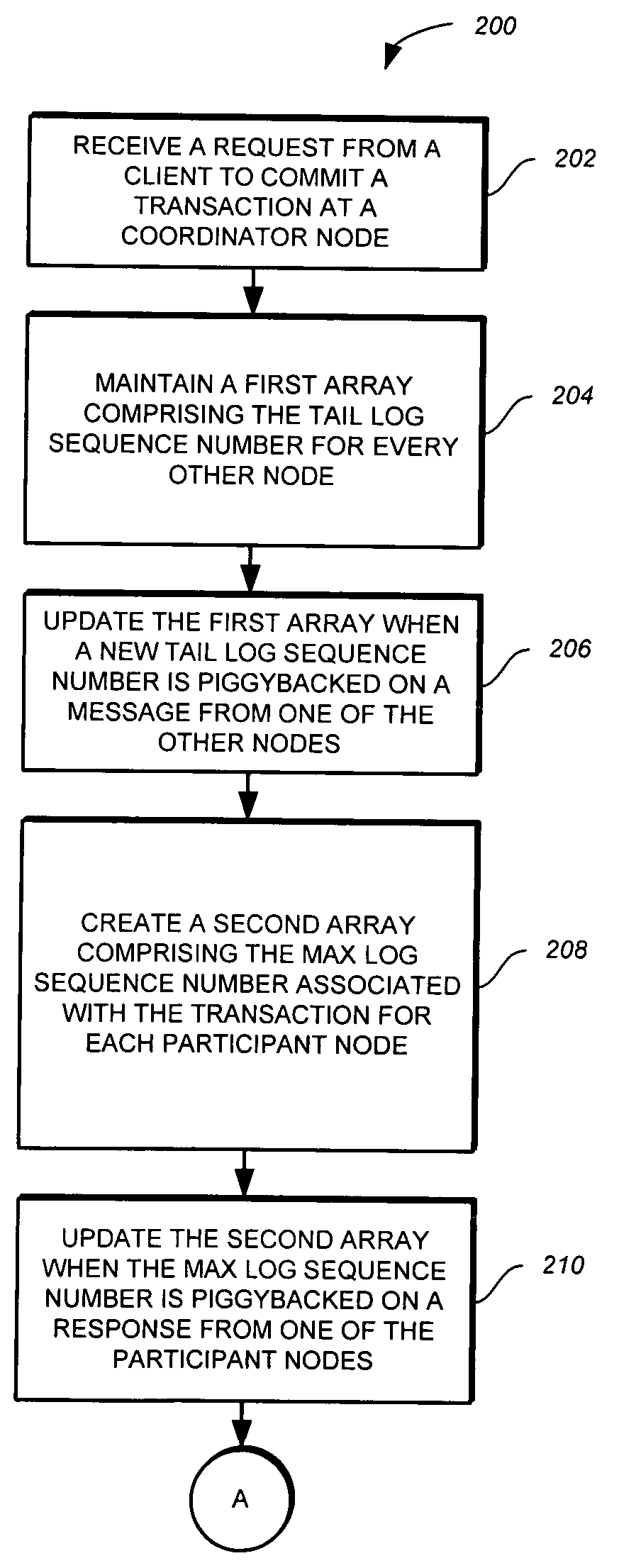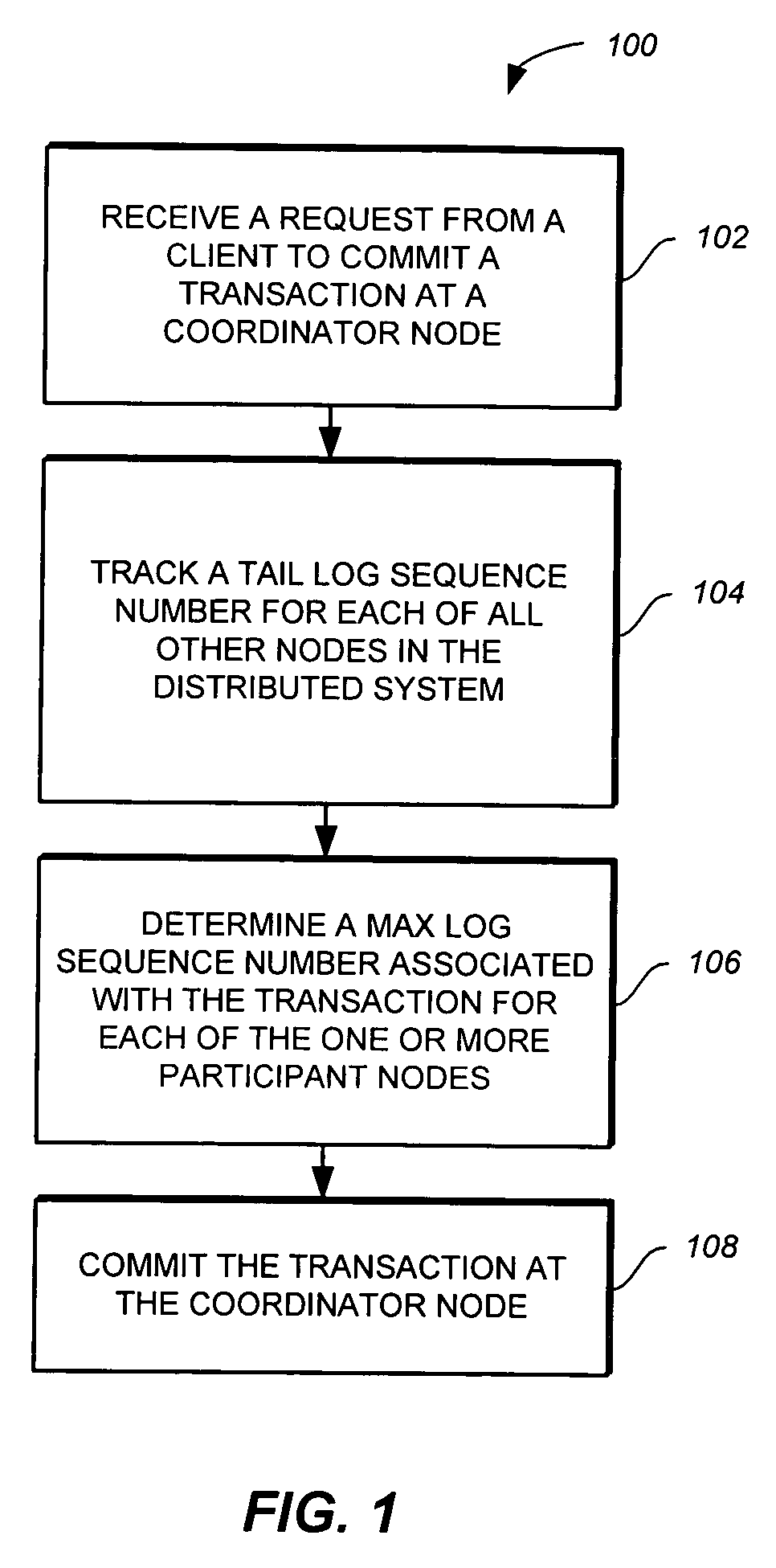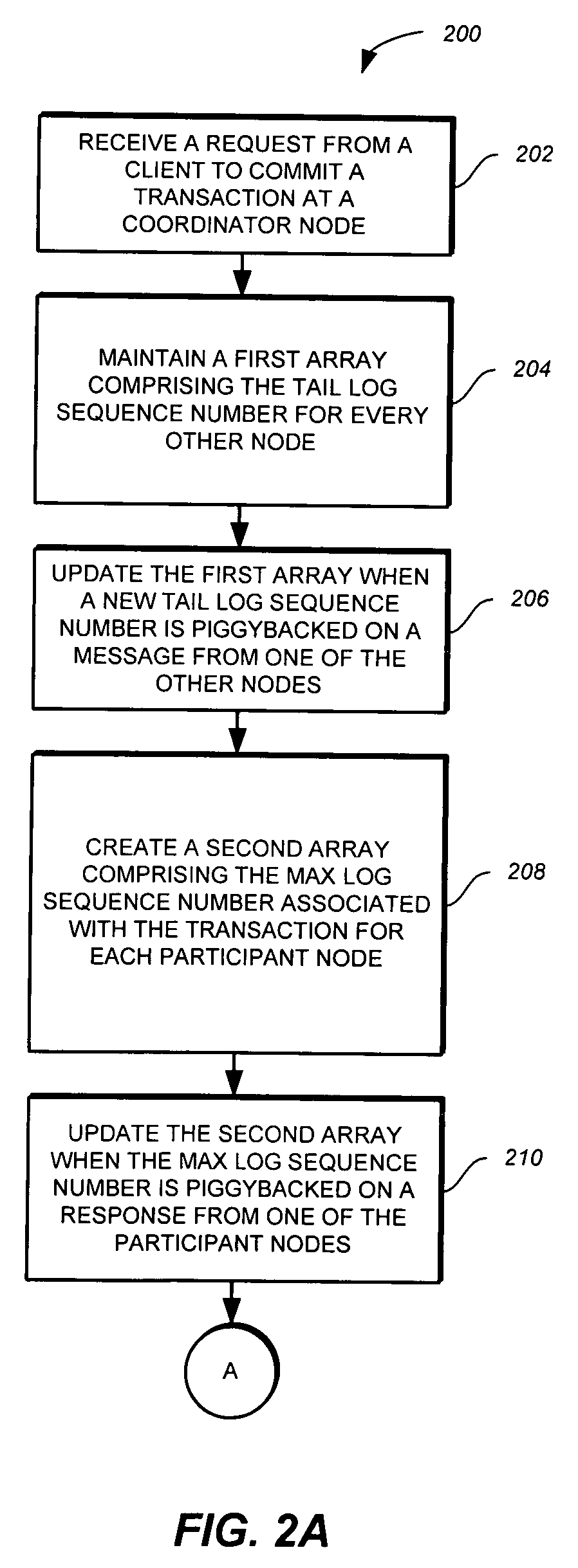Commitment of transactions in a distributed system
a distributed system and transaction technology, applied in the field of distributed systems, can solve the problems of not being able to achieve the effect of two-phase commit protocol, not being able to efficiently commit transactions, and still being more message-intensive than necessary
- Summary
- Abstract
- Description
- Claims
- Application Information
AI Technical Summary
Benefits of technology
Problems solved by technology
Method used
Image
Examples
Embodiment Construction
[0015] The present invention relates generally to distributed systems and more particularly to commitment of transactions in a distributed system. The following description is presented to enable one of ordinary skill in the art to make and use the invention and is provided in the context of a patent application and its requirements. Various modifications to the preferred implementations and the generic principles and features described herein will be readily apparent to those skilled in the art. Thus, the present invention is not intended to be limited to the implementations shown, but is to be accorded the widest scope consistent with the principles and features described herein.
[0016]FIG. 1 depicts a process 100 for committing transactions in a distributed system according to an aspect of the invention. At 102, a request to commit a transaction is received from a client at a coordinator node in the distributed system. A client can be an application or a process and may be locate...
PUM
 Login to View More
Login to View More Abstract
Description
Claims
Application Information
 Login to View More
Login to View More - R&D
- Intellectual Property
- Life Sciences
- Materials
- Tech Scout
- Unparalleled Data Quality
- Higher Quality Content
- 60% Fewer Hallucinations
Browse by: Latest US Patents, China's latest patents, Technical Efficacy Thesaurus, Application Domain, Technology Topic, Popular Technical Reports.
© 2025 PatSnap. All rights reserved.Legal|Privacy policy|Modern Slavery Act Transparency Statement|Sitemap|About US| Contact US: help@patsnap.com



